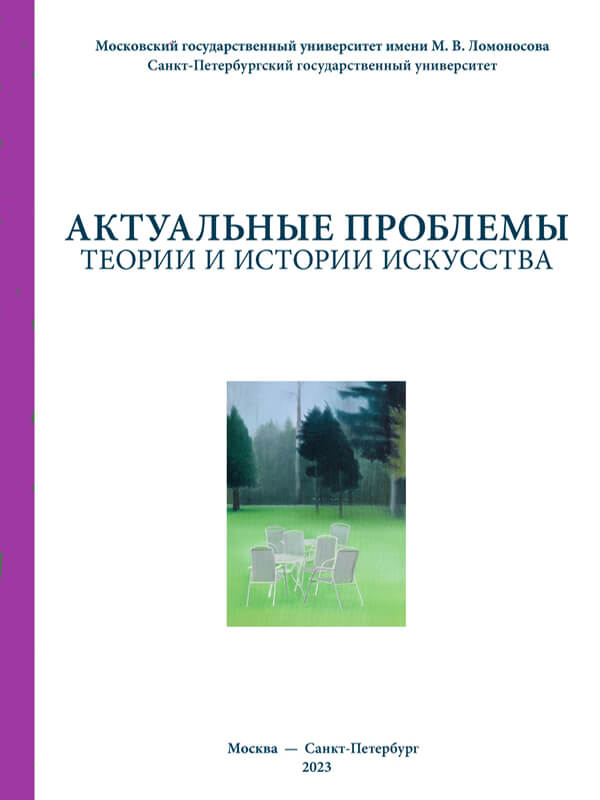The Concept of Cardboard Architecture: Influence of Linguistics on Peter Eisenman’s Early Work
DOI:
https://doi.org/10.18688/aa2313-8-57Keywords:
cardboard architecture, conceptual architecture, linguistic turn, Peter Eisenman, architectural syntax, deep structureAbstract
The crisis experienced by the modernist paradigm in architecture in the second half of the 20th century gave rise to many concepts offering a way out of the infertility of the architectural discipline. Among them was the conceptual architecture of Peter Eisenman, which arose in line with the “linguistic turn” in architectural theory. The specificity of Eisenman's understanding of the problem of the interaction of form and meaning has been described by Mario Gandelsonas as “the result of a shift in the predominant characteristic of architecture from semantic to syntactic”. Cardboard architecture, the material embodiment of the idea of conceptual architecture, receives its methodological justification in a number of Eisenman's early projects — the first of them was House 1, or the Barenholtz Pavilion. Defining cardboard architecture in terms of “consideration of form as a marking or notational system”. Eisenman borrows the notion of “deep structure” from Noam Chomsky's transformational grammar. He calls the deep structure “a range of abstract and universal formal regularities” which stands behind the external, actual structure and is conceived intellectually. Already in his next project, House 2, Eisenman introduces the concept of a dual depth structure, implying the possibility of double reading on the syntactic level. However, despite the attention to then little articulated syntactic dimension of architecture and the desire to build an interdisciplinary discourse, Eisenman's cardboard architecture failed to shift the existing architectural paradigm — conceptual architecture continued to operate within ideas and conventions of the International style.
References
Barthes R. Le Plaisir du Texte. Paris, Éditions di Seuil Publ., 1973. 105 p.
Broadbent G. A Plain Man’s Guide to the Theory of Signs in Architecture. Architectural Design, 1977, no. 7–8, pp. 474–482.
Chomsky N. Syntactiс Structures. The Hague, Mouton Publ., 1957. 117 p.
Chomsky N. Aspects of the Theory of Syntax. Cambridge: MIT Press Publ., 1965. 261 p.
Chomsky N. Language and Mind. New York, Harcourt Brace Publ., 1968. 88 p.
Eisenman P. From Object to Relationship I. Terragni Casa Del Fascio. Casabella, 1970, no. 344, pp. 38–41.
Eisenman P. Notes on Conceptual Architecture: Towards a Definition. Design Quarterly, 1970, no. 78–79, pp. 1–5.
Eisenman P. Notes on Conceptual Architecture: Towards a Definition. Casabella, 1971, no. 359–360, pp. 49–57.
Eisenman P. From Object to Relationship II: Giuseppe Terragni. Casa Giuliani Frigeria. Perspecta, 1972, no. 13–14, pp. 36–65.
Eisenman P. Notes on Conceptual Architecture II: Dual Deep Structures. Preiser W. F. E. (ed.). Environmental Design Research: Symposia and Workshops. Stroudsbourg, Dowden, Hutchinson & Ross Publ., 1973, vol. 2, pp. 319–323.
Eisenman P. Cardboard Architecture. Casabella, 1973, no. 374, pp. 17–24.
Eisenman P. Conceptual Architecture. Casabella, 1974, no. 386, p. 25.
Eisenman P. Cardboard Architecture. House I. Eisenman P. (ed.). Five Architects. Eisenman, Graves, Gwathmey, Hejduk, Meier. New York, Oxford University Press Publ., 1975, pp. 15–24.
Eisenman P. Cardboard Architecture. House II. Eisenman P. (ed.). Five Architects. Eisenman, Graves, Gwathmey, Hejduk, Meier. New York, Oxford University Press Publ., 1975, pp. 25–37.
Eisenman P. The End of the Classical: The End of the Beginning, the End of the End. Perspecta, 1984, vol. 21, pp. 154–173.
Gandelsonas M.; Morton D. On Reading Architecture. Progressive Architecture, 1972, no. 3, pp. 68–86.
Gandelsonas M. Linguistics in Architecture. Casabella, 1973, no. 374, pp. 17–31.
Greenberg A. The Lurking American Legacy. Architectural Forum, 1973, no. 5, pp. 54–55.
Krauss R. Death of a Hermeneutic Phantom: Materialisation of the Sign in the Work of Peter Eisenman. Architecture and Urbanism (A + U), 1980, no. 112, pp. 188–220.
Rowe C. The Mathematics of the Ideal Villa: Palladio and Le Corbusier Compared. The Architectural Review, 1947, no. 101, pp. 101–104.
Stern R. Five on Five. Stompin’ at the Savoye. Architectural Forum, 1973, no. 5, pp. 46–48.
Tafuri M. L’Architecture dans le Boudoir: The Language of Criticism and the Criticism of Language. Oppositions, 1974, no. 3, pp. 37–62.
Tafuri M. Five × Five = Twenty Five. Oppositions, 1976, no. 5, pp. 35–73.


